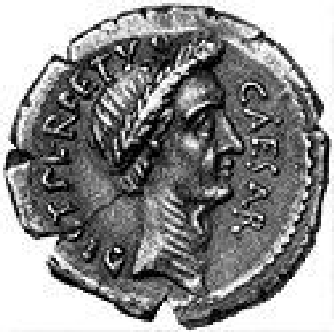Astronomy Picture of the Day
Discover the cosmos!
Each day a different image or photograph of our
fascinating universe is featured, along with a brief explanation written by
a professional astronomer.
February 29, 1996

Julius Caesar and Leap Days
Photo Credit:
Rune Rysstad
Explanation:
Today,
February 29th, is a
leap day - a relatively rare occurrence.
Advised by
Alexandrian astronomer Sosigenes,
Roman dictator
Julius Caesar, pictured above in a self-decreed minted coin,
created a
calender system
in 46 BC that contained one
leap day
every four years. The reason for adding
leap
days was that a year -
defined by the time it takes the Earth to circle the Sun - does not actually
take an exact integer number of days - defined by the time it takes for the
Earth to rotate once. In fact, one year by these
astronomical definitions is about 365.24219 days.
If all calendar years contained 365 days, they
would drift from the actual year by about 1 day every 4 years.
Eventually July (named posthumously for Julius Caesar himself)
would occur during the northern hemisphere winter!
By making
most years 365 days but every fourth year 366 days,
the calendar year and the actual year remained more nearly in step.
This "Julian" calender system was used until the year
1582 when
Pope Gregory
XIII added that leap days should not occur in years
ending in "00" except if divisible by 400, providing a further
fine tuning.
This "Gregorian" calender system
is the one in most common use today.
Tomorrow's picture: A Mysterious Cone Nebula
<
Archive
| Index
| Search
| Calendar
| Glossary
| Education
| About APOD
>
Authors & editors:
Robert Nemiroff
(MTU) &
Jerry
Bonnell (USRA)
NASA Technical Rep.:
Jay Norris.
Specific rights apply.
A service of:
LHEA
at
NASA/
GSFC
&:
Michigan Tech. U.
